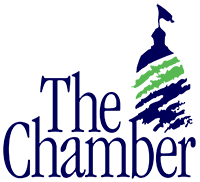Events Upcoming
New Members
401(k) Auto-Enrollment Proves Popular
Legislation moving through Congress would prompt more employers to automatically enroll new employees in 401(k) or similar defined contribution retirement plans and to increase participants' savings rates over time. Even without new mandates to do so, however, more employers are adopting automatic features to increase employee participation and to encourage employees to save enough for a secure retirement.
On March 29, the House overwhelmingly approved the bipartisan Securing a Strong Retirement Act by a vote of 414-5. The bill is dubbed "SECURE Act 2.0" because it builds on the Setting Every Community Up for Retirement Enhancement (SECURE) Act, signed into law in December 2019.
Mandatory Automatic Enrollment/Escalation
Among its many provisions, SECURE Act 2.0 would require employers that establish new defined contribution plans to automatically enroll newly hired workers, once they're eligible, in the plan at a pretax contribution level of 3 percent of the employee's pay. This level would increase annually by 1 percentage point up to at least 10 percent but not more than 15 percent of the employee's pay. Employees could affirmatively elect a different contribution.
If a participant has not made an investment election, contributions would be defaulted into a "qualified default investment alternative," which is typically a target date or balanced fund, or a managed account.
A Wake-up Call
SECURE Act 2.0's auto-enroll provisions would only apply to new 401(k) and 403(b) plans established after the legislation's enactment date, not to currently existing plans. There is also an exception for small businesses with 10 or fewer employees, those in business for less than three years, church plans and governmental plans.
But, if enacted, "this legislative change should serve as a wake-up call for existing plans without automatic enrollment and escalation features, as these will become standard ways to make sure you're acting in your employees' best interest," said Edward Gottfried, a retirement expert at Betterment at Work, a provider of financial wellness benefits. Existing plans that don't adopt these features could seem out-of-date.
Regarding the initial default rate for auto-enrolling employees, Gottfried advised that "while 3 percent of pay is too low to set an employee up for success in retirement, these laws tend to establish the floor more than the target range." He recommended that employers consider an auto-enrollment rate "of at least 5 percent at the low end," and noted that many employers are opting for rates as high as 8 percent or 10 percent, depending on workforce demographics such as average earnings.
"Employees also tend to treat the auto-enrollment rate as the floor for their own contribution rates," Gottfried pointed out. "When they change away from the auto-enrollment rate, it's predominantly to increase their contribution."
Auto-Enrollment Appreciated
According to the Society for Human Resource Management's 2020 Employee Benefits report, based on responses from 2,504 HR professionals across the U.S.:
- 51 percent of respondents automatically enroll new or existing employees into a 401(k)-type plan, up from 39 percent in 2018.
- 26 percent automatically increase employee contributions annually, up from 18 percent in 2018.
In other research, Vanguard Investments found that 9 in 10 automatically-enrolled new hires remained in their employer's plan after three years, based on Vanguard record-keeping data through June 2020.
"Because automatic enrollment improves plan participation, there is a concern that associated employer matching costs will strain a firm's finances," Vanguard noted. However, "switching from voluntary enrollment to automatic enrollment will typically add, on a relative basis, lower-paid employees to the plan. So, the associated additional matching costs will be somewhat diluted because a large number of the new plan participants will be lower paid," and these are the workers most likely to benefit from being nudged to participate in the plan.
That's borne out by findings from a Principal Financial Group's 2021 poll of more than 2,000 workers and retirees and 230 plan sponsors. The vast majority (84 percent) of workers that were automatically enrolled in their workplace plan said they started to save for retirement sooner than if the plan had required them to enroll on their own.
Plan sponsors offering automated plan features saw positive effects such as:
- Employees saving a higher percentage of their pay (65 percent).
- Plan assets growing faster (47 percent).
"Automatic enrollment features are powerful in helping people feel more secure as they strive to build up retirement savings," said Sri Reddy, senior vice president for retirement and income solutions at Principal Financial Group. "The tried-and-true methods of auto-enrollment, company matching and individualized financial education remain powerful assets in helping people save for their futures."
This article is courtesy of The Society for Human Resource Management (SHRM).

